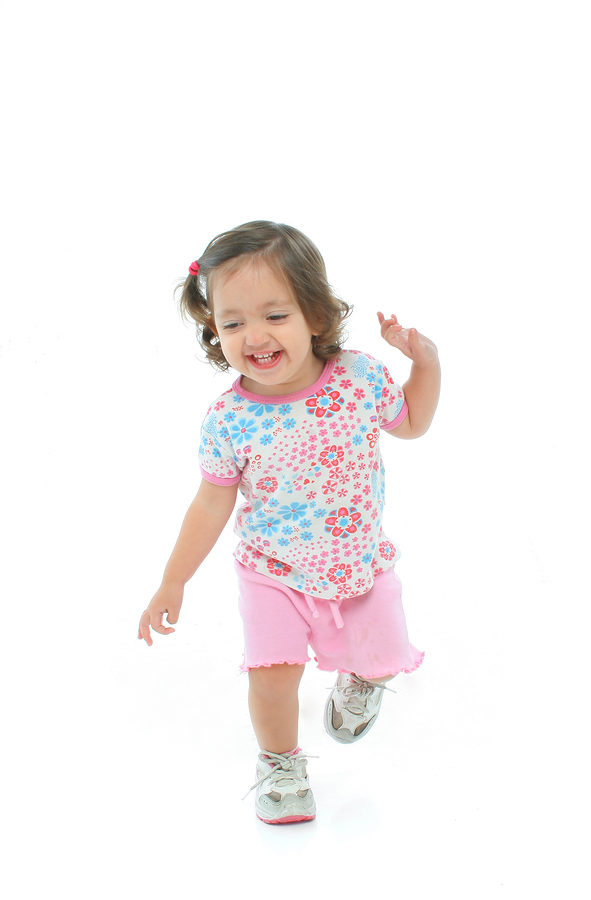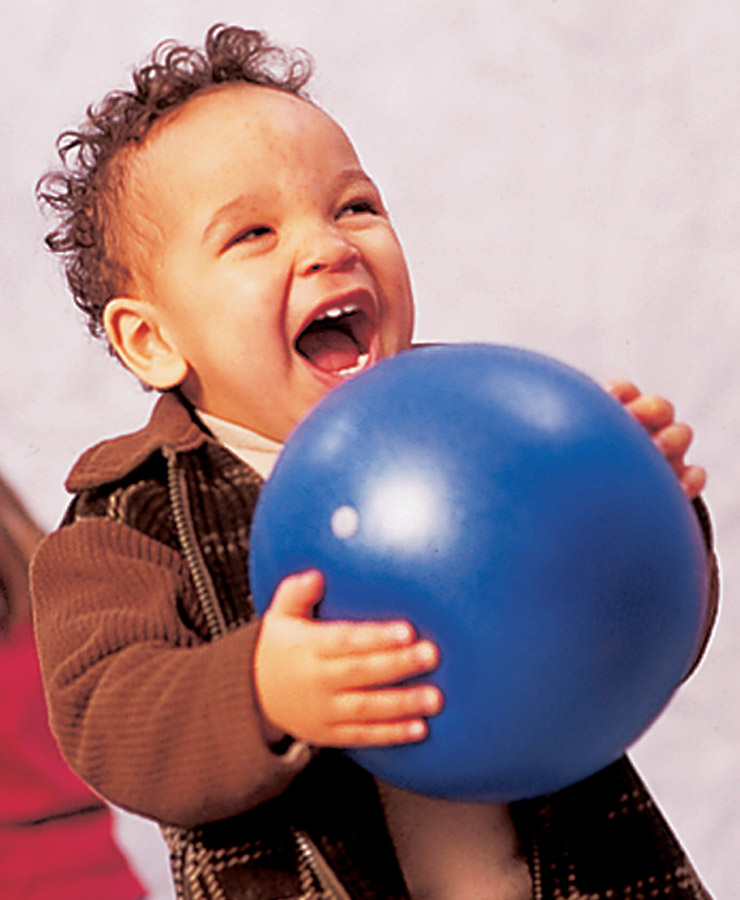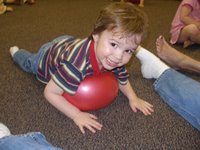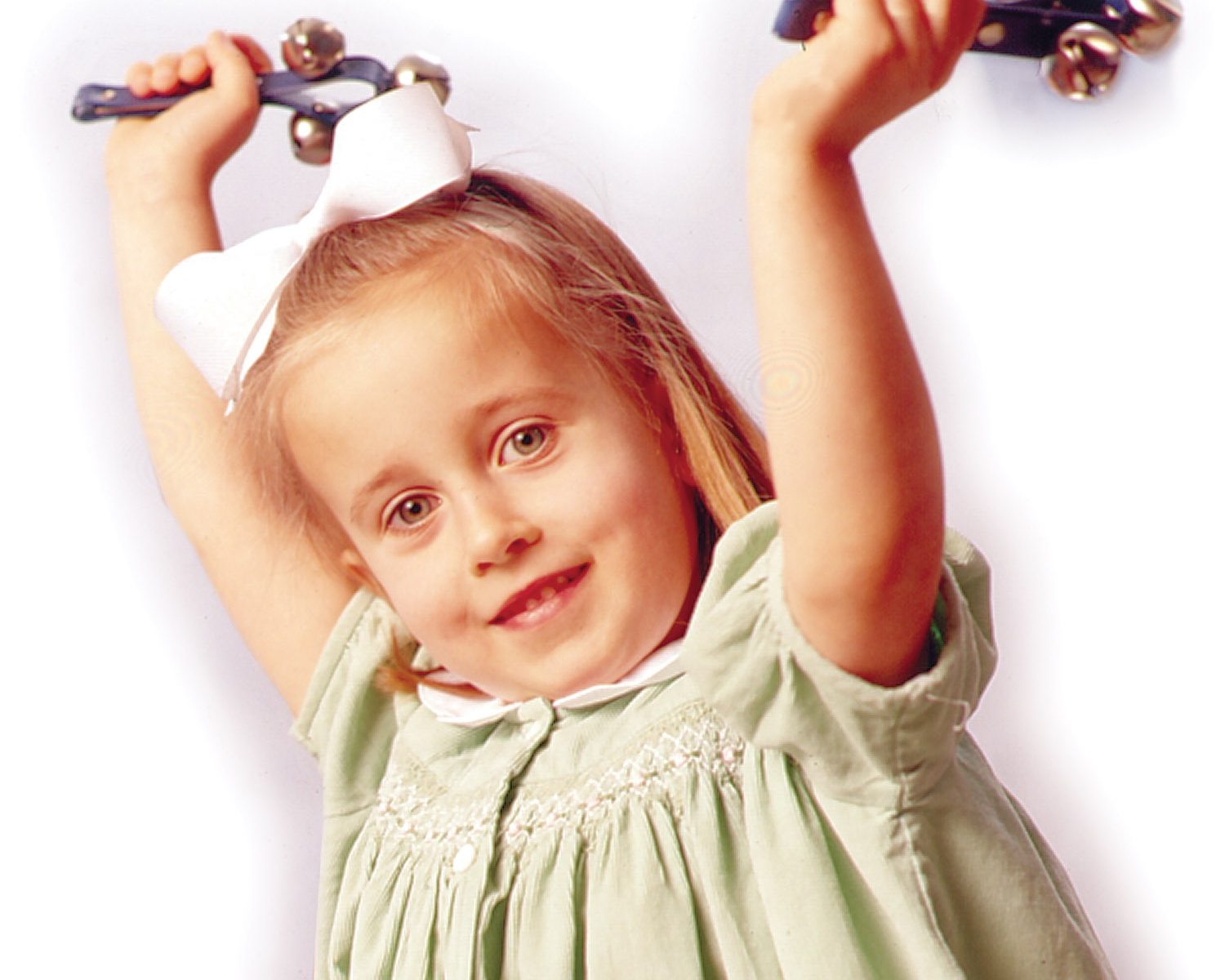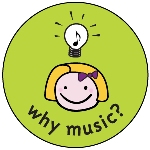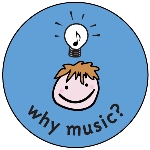 Discovering and exploring movement provides young children with profound learning experiences. They are delighted to practice and show off their emerging skills, and they will seek out opportunities to practice these skills frequently. It is during this time that the foundation is laid for body-management activities needed in childhood games, recreational activities, and eventually sports (Carson 2001).
Discovering and exploring movement provides young children with profound learning experiences. They are delighted to practice and show off their emerging skills, and they will seek out opportunities to practice these skills frequently. It is during this time that the foundation is laid for body-management activities needed in childhood games, recreational activities, and eventually sports (Carson 2001).
Ideas for parents: One fun way to explore movement ideas together is to play a simple “Copy Me” game. The first person moves and the partner copies. Take turnings being the one moving and the one copying. This game is likely to become quite hilarious with preschoolers and big kids who will have fun coming up with the silliest ideas ever! Add a little music, and you’ve got the inspiration for some happy, fun music and movement activities that will keep you entertained and physically active!
FOL Fridays: Have a Ball!
 To a child with imagination and a parent who hasn’t forgotten the simple joys
To a child with imagination and a parent who hasn’t forgotten the simple joys
of childlike playfulness, every object has unlimited possibilities. Ball play enables children to investigate rolling, bouncing, passing, and tossing, exercising their imaginations as well as their gross-motor skills.
Tips for parents: You can enjoy ball play indoors or out with a Gertie® ball. Gerties are squishy, catchable balls perfect for the child just learning ball skills. Add a little fun ball play music – it’s easy to put together a favorite playlist from play.kindermusik.com just by searching on the word “ball.”
Contributed by Theresa Case, whose Greenville, SC program, Kindermusik at Piano Central Studios, is proudly among the top 1% of Kindermusik programs worldwide.
FOL Fridays – Explore and Discover
The preschool-aged child always seems to be curious, ready to find out more or explore and discover. And they have a big imagination to go along with it! These are some of the great delights of enjoying all kinds of activities with 3 year olds and 4 year olds, but especially the kinds of playful, creative, learning-oriented music activities we do in our Kindermusik classes for this age group.
 For example, asking your child to broaden his or her understanding and experience of moving a ball in a way other than bouncing or throwing it opens up new play possibilities. Through repeated exploration experiences, the child can develop the concept that every object has unlimited possibilities for exploration. Becoming aware that an object can be used in many ways allows the child to problem solve – trying new things, making errors and learning from the total process. The child can then transfer this explorer attitude to other activities. This is true ownership of learning and becomes a lifetime tool.
For example, asking your child to broaden his or her understanding and experience of moving a ball in a way other than bouncing or throwing it opens up new play possibilities. Through repeated exploration experiences, the child can develop the concept that every object has unlimited possibilities for exploration. Becoming aware that an object can be used in many ways allows the child to problem solve – trying new things, making errors and learning from the total process. The child can then transfer this explorer attitude to other activities. This is true ownership of learning and becomes a lifetime tool.
Tips for parents (and fun for kids!): Kindermusik teachers love GERTIE balls for all kinds of ball play, even for toddlers. Gertie balls are easy to grasp and are safer for indoor play than regular balls.
Shared by Theresa Case, whose Kindermusik program at Piano Central Studios in Greenville, SC, is proudly among the top 1% of Kindermusik programs worldwide.
FOL Fridays: Modeling
 Children learn best by doing. Through modeling, a child has many opportunities to imitate steady beat and experiment with steady-beat playing. Practicing these emerging music skills within the context of meaningful and playful activities gives a child a rich and unparalleled learning experience.
Children learn best by doing. Through modeling, a child has many opportunities to imitate steady beat and experiment with steady-beat playing. Practicing these emerging music skills within the context of meaningful and playful activities gives a child a rich and unparalleled learning experience.
Ideas for parents: Music is such a tremendous vehicle for learning of all kinds, but to enhance and inspire your child’s developing music skills, make it a goal to surround your child with music at home – during play, as he settles for nap, at bath time, and before bed. Whether you’re singing to him or you just keep the iPod or radio playing, your child will benefit tremendously and will likely be inspired to pick up and play along. Listening and responding to music exposes your child to the many wonderful benefits of music and a musical environment.
– Contributed by Theresa Case, whose Greenville, SC program, Kindermusik at Piano Central Studios, is proudly among the top 1% of Kindermusik programs worldwide.
FOL Fridays – The Music Inside
 Children need opportunities to hear music sung, and they need invitations to hear music internally, with no external sound source. Being able to hear music “in your head” (audiation) like this is an important part of musical literacy, just as learning to think sentences and thoughts without speaking is an important feat in language development and part of early literacy development. Omitting parts of familiar songs is one way to help children begin to “fill in the blanks” and hear music internally.
Children need opportunities to hear music sung, and they need invitations to hear music internally, with no external sound source. Being able to hear music “in your head” (audiation) like this is an important part of musical literacy, just as learning to think sentences and thoughts without speaking is an important feat in language development and part of early literacy development. Omitting parts of familiar songs is one way to help children begin to “fill in the blanks” and hear music internally.
Fun at home or in the car: Sing a song like “Twinkle, Twinkle.” Leave out a word and then pause… you very well may hear your child fill it in! Or hum a favorite tune
and see what happens when you don’t sing the last note. (Can you hear it in your head?!)
By singing a song and allowing your child to fill in the blanks, you are developing her sense of inner hearing as related to pitch and melody. Singing a song in your mind is akin to thinking a story or making a plan without speaking out loud. Remembering the sequence adds an additional level of complexity. It is a necessary life skill.
Shared by Theresa Case, whose Kindermusik program at Piano Central Studios in Greenville, SC, is proudly among the top 1% of Kindermusik programs worldwide.
FOL Fridays – Creativity: It's In All of Us
 Creativity isn’t a trait that some people have and others don’t. It’s a way of using your mind and body as you engage in a task that has no prescribed approach. In the creative process, your ideas, feelings, skills, and knowledge flow together in innovative ways, allowing you to make or learn something new.”
Creativity isn’t a trait that some people have and others don’t. It’s a way of using your mind and body as you engage in a task that has no prescribed approach. In the creative process, your ideas, feelings, skills, and knowledge flow together in innovative ways, allowing you to make or learn something new.”
(“Creative Minds at Play” in Scholastic Parent & Child Dec./Jan. 1998 by Charlotte Doyle, Ph.D.)
Ideas for parents: There are many simple ways to effectively encourage your child’s creativity. Here are just a few…
- Ask open-ended questions or silly “What if…” kinds of questions.
- Use the technique of scaffolding – Observe what your child is doing. Copy it, then suggest or model a slight change to what they’re doing. (This is a good technique with instrument play.)
- Recycle paper towel tubes, plastic containers, and boxes and keep them available for open-ended play inspiration.
- Keep a box of dress-up clothes in the playroom – from cowboy hats to princess shoes to tutus to a fireman’s vest to scarves.
- Stock up on simple art supplies like large sheets of paper, washable markers, finger paints, and crayons. Turn on some music and encourage your child to draw what he hears.
- Turn off your cell phone, sit down, and play with your child. Pretend play is a great way to relieve stress and bond with your child!
Try this Creative Activity with your Kids
Here’s a sample activity from Kindermusik@Home that allows your children to show their creative side. Watch these silly animals and let your kids imitate their movements – in their own creative way.
Shared by Theresa Case, whose Kindermusik program at Piano Central Studios in Greenville, SC, is proudly among the top 1% of Kindermusik programs worldwide.
FOL Fridays: The Power of Reading
 So much of the intelligence children will ultimately have is developed before they even go to kindergarten. When you read to them, you are building pathways in their brains needed for successful reading experiences. They will develop auditory perception that allows them to think about how words sound. Listening to stories helps children enhance their vocabularies and use longer sentences. Another wonderful benefit of reading to children is that it increases their attention spans and ability to focus on what is being said. More than anything else, reading to young children gives them a desire to read (Gisler and Eberts).
So much of the intelligence children will ultimately have is developed before they even go to kindergarten. When you read to them, you are building pathways in their brains needed for successful reading experiences. They will develop auditory perception that allows them to think about how words sound. Listening to stories helps children enhance their vocabularies and use longer sentences. Another wonderful benefit of reading to children is that it increases their attention spans and ability to focus on what is being said. More than anything else, reading to young children gives them a desire to read (Gisler and Eberts).
TIP: Check out the fabulous Parents’ Choice website for book reviews and tips on reading to young children.
– Compiled with Theresa Case, M.Ed. Theresa’s program, Kindermusik at Piano Central Studios, is proudly among the top 1% of Kindermusik programs worldwide.
FOL Fridays: Social Interaction
 As children grow, they must learn to play with others, not just for sake of “getting along” but also because being able to interact with peers is an important part of becoming a successful learner. Sharing and taking turns are difficult lessons to master, but as children spend more time playing together, they begin to recognize each other’s feelings and advance from parallel play (playing along side other children) to cooperative play (playing with other children).
As children grow, they must learn to play with others, not just for sake of “getting along” but also because being able to interact with peers is an important part of becoming a successful learner. Sharing and taking turns are difficult lessons to master, but as children spend more time playing together, they begin to recognize each other’s feelings and advance from parallel play (playing along side other children) to cooperative play (playing with other children).
IDEA: Use your Kindermusik songs and activities from class to inspire some parent-child play at home. You can also encourage your child’s play by providing simple and developmentally appropriate play materials. Organize the items into labeled bins and place in easy reach on shelves or in the closet.
– Compiled by Theresa Case, M.Ed. Theresa’s Kindermusik program at Piano Central Studios in Greenville, South Carolina, is proudly among the top 1% of Kindermusik programs worldwide.
FOL Fridays: Emotions and Learning
 Emotions have a tremendous impact on learning. Simple family activities like rocking together help develop a child’s sense of security and worth, allowing him to grow into an assured, confident learner with healthy self-esteem.
Emotions have a tremendous impact on learning. Simple family activities like rocking together help develop a child’s sense of security and worth, allowing him to grow into an assured, confident learner with healthy self-esteem.
IDEA: Need some music to set the mood? KI’s music site, play.kindermusik.com, has some great lullabies that make for perfect rocking music.
– Compiled by Theresa Case, M.Ed. Theresa’s Kindermusik program at Piano Central Studios in Greenville, South Carolina, is proudly among the top 1% of Kindermusik programs worldwide.

